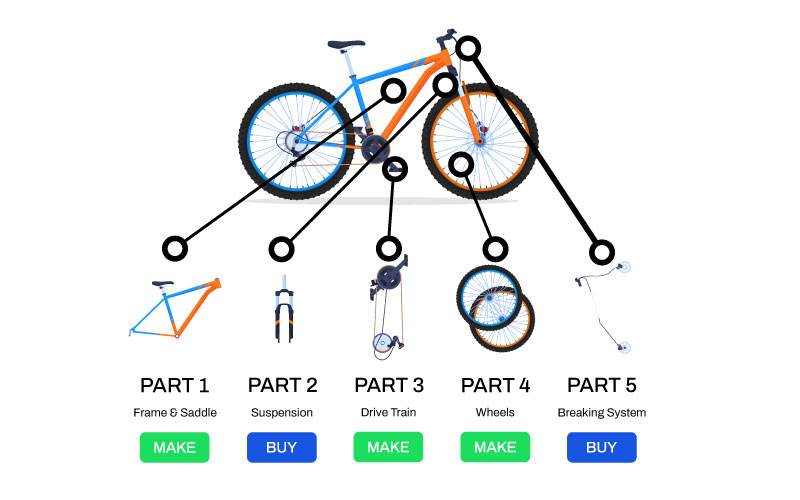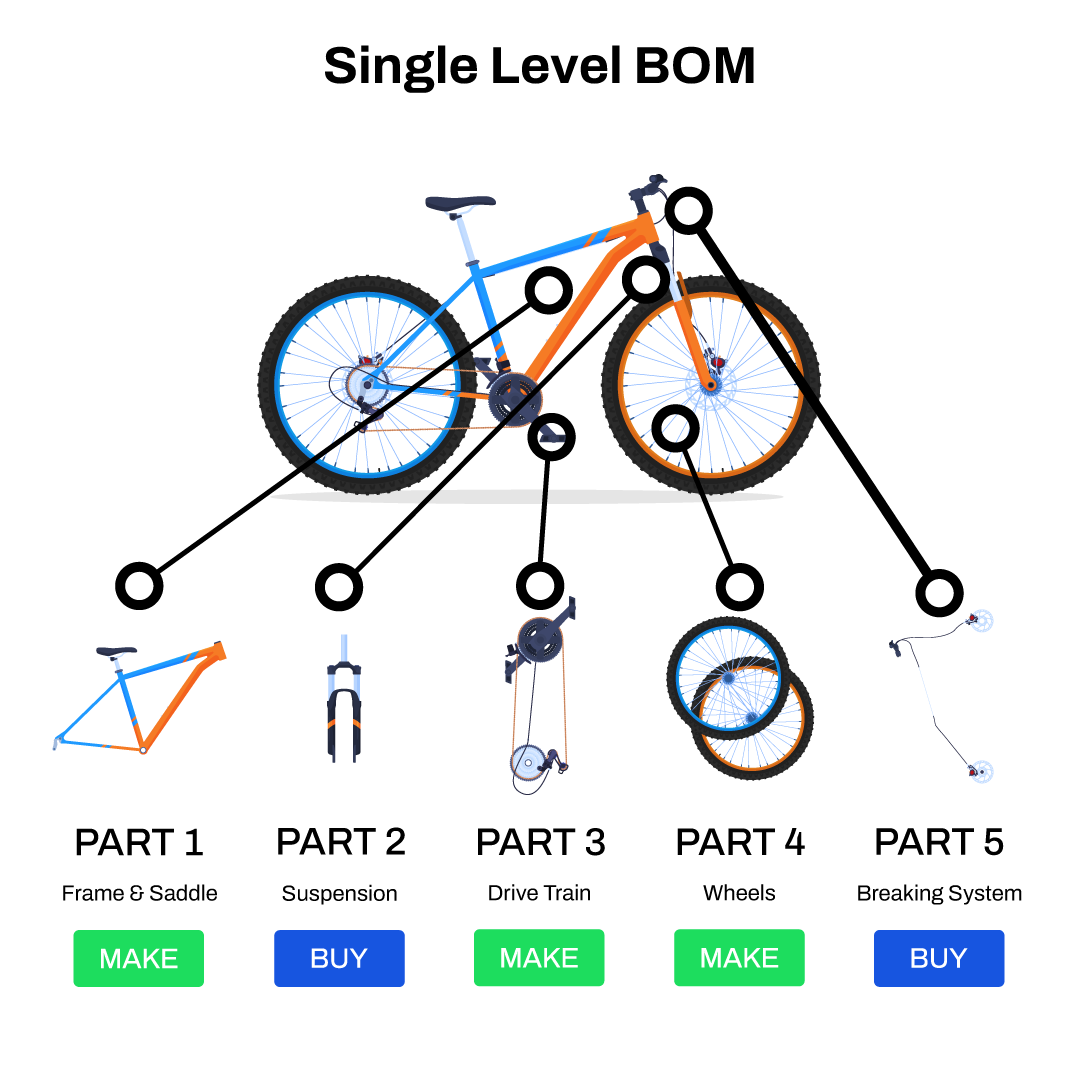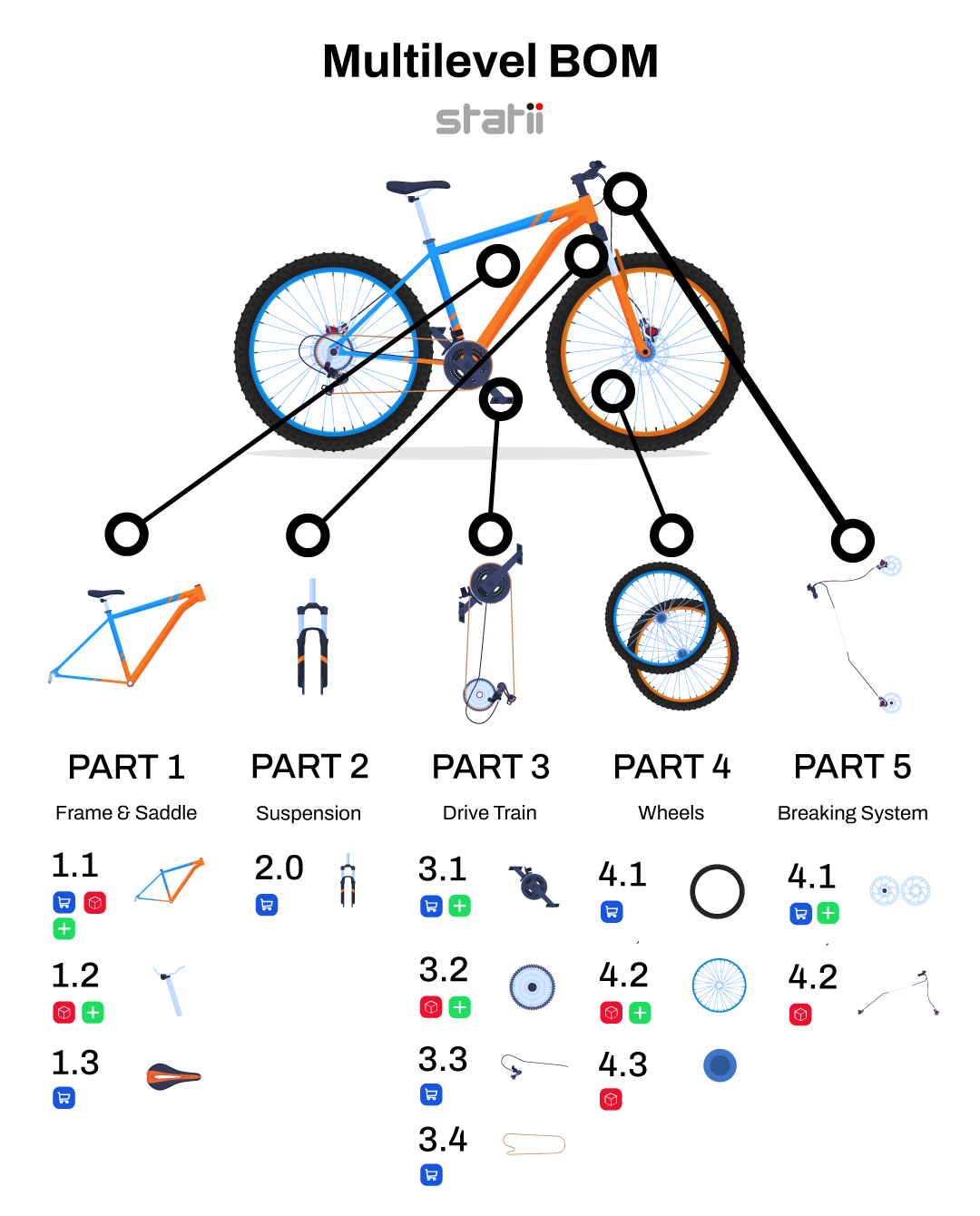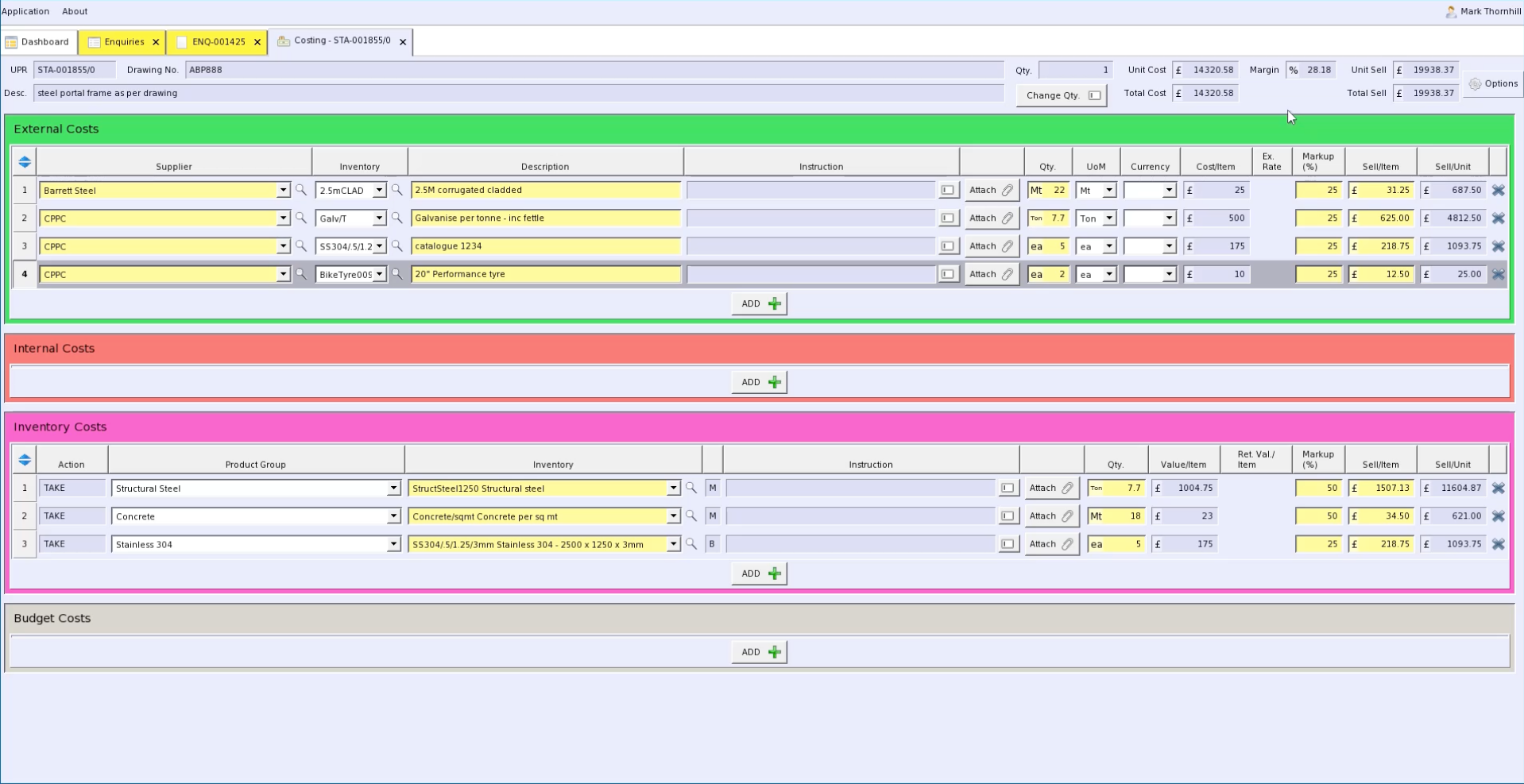A comprehensive journey to understand how the Bill of Materials (BOM) is a crucial inventory blueprint for manufacturers. Learn about its diverse types, the distinction between single and multilevel BOMs, and the benefits of utilising BOM software. This guide will navigate you through the creation process, highlight the essential elements of a BOM, and provide insights into choosing the right BOM system for your manufacturing needs. Enjoy practical examples, free templates, and professional advice to elevate your production efficiency.

Another helpful acronym! BOM, which stands for bill of materials, is a comprehensive inventory of the raw materials, assemblies, sub-assemblies, parts, and components, as well as the quantities of each needed to manufacture a finished product. The BOM provides detailed instructions for assembling a product and is crucial for planning and optimising production.
There are actually types of BOMs. Which one you use will depend on your sector and purpose, so let's take a look.
The engineering BOM represents the product as designed by the engineering team. It includes all the parts and assemblies required to complete the design. Product engineers typically develop it during the product design phase, including technical specifications, such as part numbers and descriptions.
Sometimes known as a Production Bill of Materials, the manufacturing bill of materials represents the product as it will be manufactured. It includes all the parts and assemblies required to manufacture the final product, taking into account the manufacturing process. The manufacturing BOM can consist of additional details not present in the EBOM, such as routing instructions, work centre details, preferred suppliers, costings, etc.
The SBOM represents the product as it is sold. This includes finished goods and any optional components or add-ons available to the customer. The SBOM is often used in industries like automotive, where customers can choose to customise their products with optional features.
This BOM is used for service and maintenance purposes. It includes replacement parts, service kits, and other components required to service or repair the product after the sale.
A configurable BOM is a form of a bill of materials used for products with a lot of potential variation - for instance, in made-to-order manufacturing processes. This kind of BOM allows for a high degree of customisation in the final product based on customer requirements.
The key to a successful manufacturing process is organisation, and a BOM structure visualises this organisation.
An accurate BOM will detail the raw materials required, the suppliers you will buy them from or if you have them stocked as inventory items with current availability.
With details of what materials you need and all the components required, the BOM structure should detail the production process, otherwise known as the assembly BOM. It can be used to create works orders, generate a production schedule and provide lead times.

A Single-Level Bill of Materials (BOM) is a simplified snapshot of the components required to create or assemble a product. It's a linear representation focusing on the relationship between the end product and its immediate constituent parts or assemblies. However, it does not delve into the granular details of how each of those sub-assemblies might be constructed.
For example, above, you can see the product (a bike) is built by assembling five parts. Part one is the frame and saddle, which has to be manufactured, not bought. A single-level BOM won't explain the materials needed and the production process to build the frame & saddle so that it is ready to be assembled.
A single-level BOM is most effective for simple products with a minimal BOM hierarchy of components or when the focus is on the first step of assembly. It offers an organised, clear, and straightforward view of the product composition, making it a valuable tool for basic inventory control, purchase planning, and initial assembly instructions. However, more complex products with multiple assembly layers require a more complex and detailed bill of materials.

A Multi-Level Bill of Materials is a detailed representation of all the components, sub-assemblies, and materials needed to manufacture finished goods. It not only lists the direct ingredients of the product but also breaks down each of these components into their individual parts, going as many levels deep as necessary until reaching raw materials.
Using the bike assembly example again, a multi-level BOM would start with the final product - the bike - at the top level. It would then break down each of its components into sub-assemblies and individual parts. For instance, in part three, the drive train consists of four parts, part 3.1 requires purchasing and production, the materials for 3.2 are held in inventory and require assembly, and parts 3.3 and 3.4 are buy-to-order, so they only need a purchase order.
This process of deconstruction continues until all components are listed down to the raw materials level. In this way, the multi-level BOM provides a comprehensive view of the manufacturing process from start to finish. They offer detailed insight into the product structure, assisting in more accurate planning, costing, and scheduling. Additionally, they facilitate better understanding and communication among various departments, from design and engineering to procurement and production.
If you haven't yet moved to an MRP system, you'll likely be using a spreadsheet in Excel or Google Sheets. But what hierarchical structure do you need to create an easy-to-understand effective BOM?
Every production process is different, and what information you need in your assembly component list will be different, but as a general guide, you will want to include the following:


We have created two free manufacturing BOM resources to get you started building your bill of materials.
Looking for the most simple form of managing your production method? Download our free BOM spreadsheet template by clicking here.
Are you for a free manufacturing CRM, quote estimating tool and bill of materials software? We created Statii Liite to help businesses begin upgrading from a spreadsheet system that requires constant updating and manual document creation to a more integrated and automated production management system.
To claim your free Statii Liite system, click here.
Statii users automatically create a bill of materials whenever they create a quote or estimate a job cost. With all this information determined at the sales stage, Statii users benefit from the following:
By determining the exact quantities of materials required and the time and costs associated with production processes needed to manufacture the product, quotations are more accurate and result in more consistent profit margins.
As all the information relating to the job has been determined at the quoting stage, all Statii users have to do is convert the quote to a live job to raise a Sales Order document. Any required purchase orders and works orders will also be raised and attached to the sales order for the organisation ready to be actioned.
But how exactly do you create a bill of materials in Statii, and what will it look like?
In Statii, everything happens at the quote stage, which means all the information you need to manage the production process flows right through to the invoice.
In Statii, there are two material management systems, and you can select from:
Anything entered or chosen from the pre-populated drop-down menus in external costs will create purchase orders for users to send once the quote is converted into a live job.
Statii users can choose inventory items when creating a bill of materials, and it is at this stage when users can create multi-BOM level by selecting the type of inventory item they want to use, which are:
(BUY) Bought-in items - buy items don't require any assembly and are just held in stock.
(MAKE) Make-to-order items - make items are like blueprints that sit in your inventory and consist of external costs, other inventory items and internal costs, which are responsible for creating works orders or route cards.

By understanding what materials are needed and when, businesses can optimise their stock levels, reducing the risk of over or understocking. If using a BOM in an MRP system that integrates with an inventory management module, businesses can ensure they have sufficient stock levels with live stock checking features or setting minimum stock quantities if it's an often-used essential raw material.
A BOM software will allow users to see what materials are required, set requested due dates on Purchase Orders and proactively chase late deliveries. With internal operations also included, production managers, can create accurate manufacturing schedules and determine early if there will be delays due to late material deliveries or lack of staff availability.
Manual BOM creation is prone to errors, which can lead to costly mistakes. By automating this process, BOM software can significantly reduce the risk of such mistakes, ensuring accurate tracking of components, quantities, and assembly instructions.
With BOM software, information is centralised and can be accessed by different departments simultaneously. This encourages collaboration and ensures everyone is on the same page, minimising miscommunications or delays with a single source of truth.
BOM software allows for tracking each part or component used in the manufacturing process. This level of traceability is not only crucial for quality control but is also essential for compliance with certain industry standards.
There are many ways to manage a bill of materials, and the complexity ranges from Excel BOM templates to fully integrated enterprise resource planning systems. We've detailed some key considerations when choosing your BOM system.
As we detailed in the bill of materials (BOM) example section above, we have free Excel templates and even a free quoting system, Statii Liite.
But it's likely you want to get the most out of a BOM software, more automation, greater time-saving and better accuracy, and that means a slightly more advanced system.
Why not try Statii Free for 14 Days? Claim free trial here?
But we recommend getting a quick demo. It's your business at the end of the day, and you've got to see it in action! Book a demo with our sales team by clicking here.